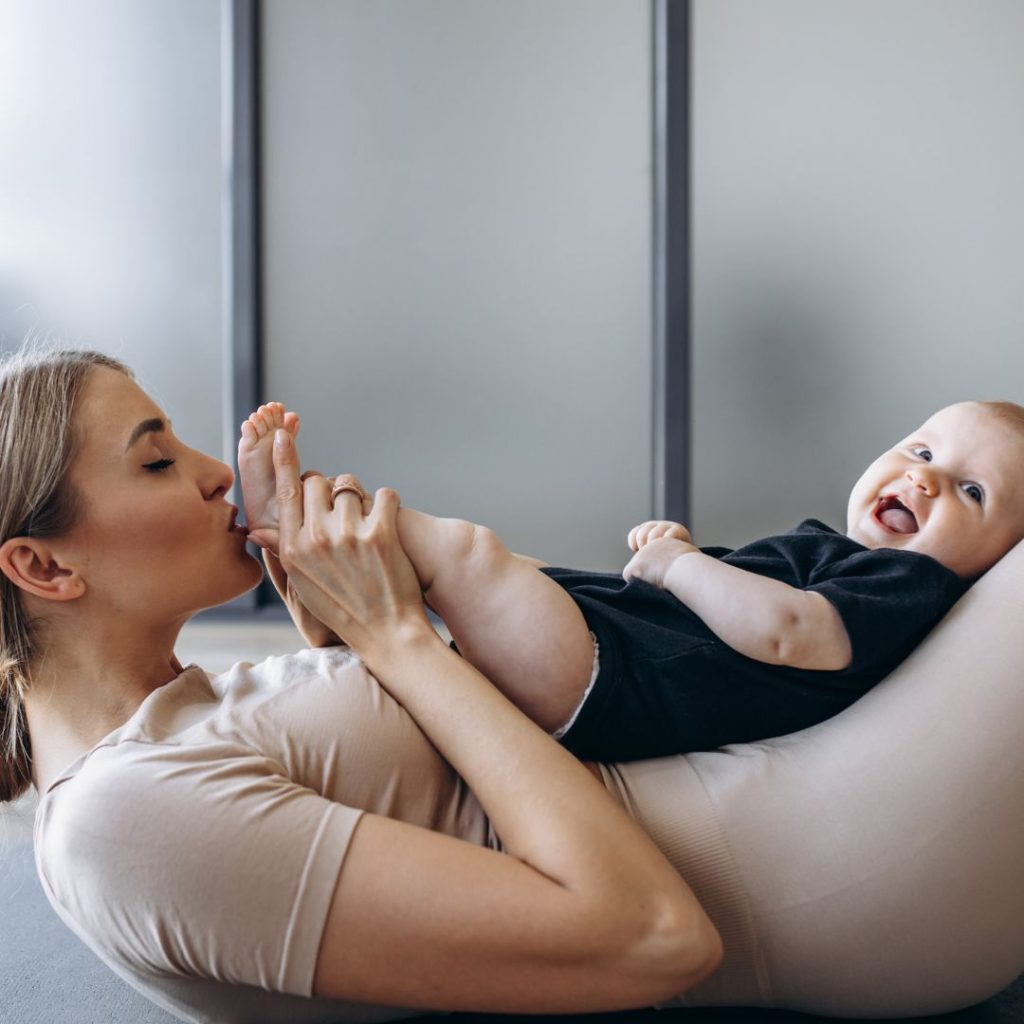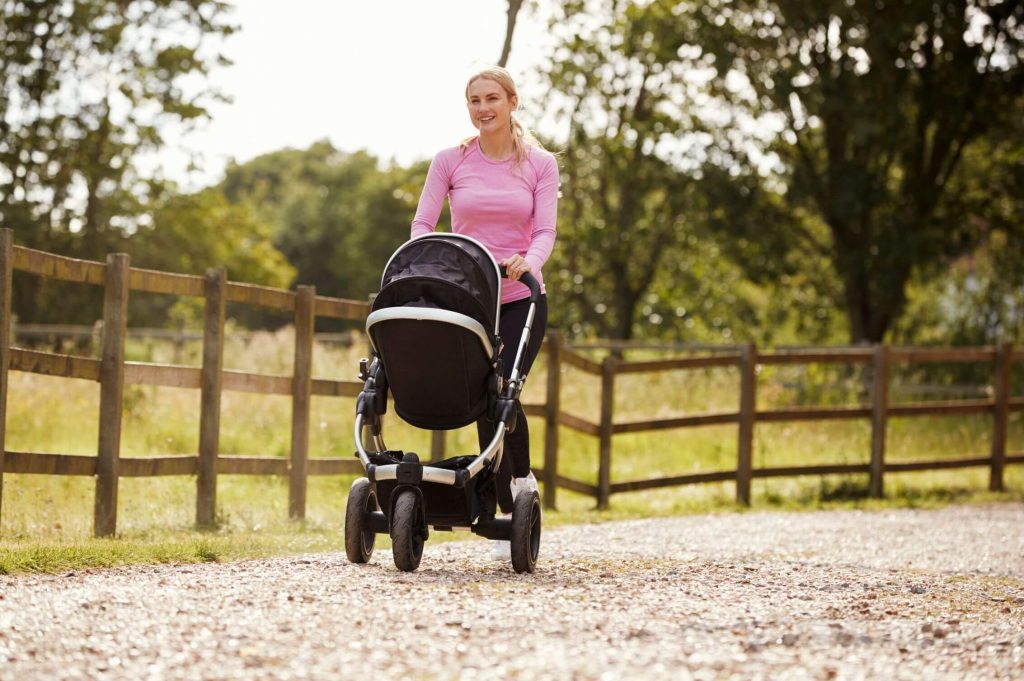
Pregnancy brings about incredible physical changes, and giving birth — whether vaginally or via C-section — is a major event for your body. In the early weeks of your postnatal recovery, it’s essential to prioritise your recovery and allow time for rest, healing, and gradual reconditioning.
While it may feel good to start gentle movement soon after giving birth, we recommend waiting at least 6 weeks before returning to pre-pregnancy or pregnancy exercise routines. Instead this return should only happen after a thorough assessment with a Women’s Health Physiotherapist, who will evaluate your pelvic floor and abdominal wall recovery.
So what is the focus of the first 6 weeks?
The focus during the first six weeks is on:
- 🛌 Supporting pelvic floor healing through horizontal rest
- 💪 Gently activating your core and pelvic floor muscles
- 🚶♀️ Gradually reintroducing walking and light movement
🗓️ To guide you, here’s a week-by-week guide for what to focus on from 0 to 6 weeks postpartum, until you attend your postnatal check with your GP/Obstetrician and Women’s Health Physiotherapist.
Week 0–1: Early Recovery Priorities
🫄 Your pelvic floor spent nine months supporting the weight of your growing baby and experienced significant strain, including pressure and stretching of the connective tissue, fascia, and ligaments. As a result, the first six weeks after birth are a critical window for healing. The most important tools during this time are horizontal rest and quality sleep. Here’s what to focus on in your first week:
1. Horizontal Rest
🛋️ To allow your pelvic floor and supporting tissues the recovery they need:
- Aim to lie down in a horizontal position (on your back or side) in bed or on the couch.
- Rest in this position for at least 2 hours per day during the first 1–2 weeks postpartum. Importantly, this can be broken into shorter 30-minute blocks.
2. Ice
❄️ To reduce swelling and discomfort at your perineum or incision site:
- Apply an ice pack for 15–20 minutes every 2 hours during the first 48–72 hours post-birth.
3. Abdominal Compression
🤍 Supporting your abdominal wall can aid recovery from abdominal separation:
- Wear compression for 6–8 hours daily for the first 6–8 weeks.
- Start with Tubigrip in the early days, then transition to medical-grade compression garments.
- Recommended brands include SRC, Supacore, and Continual.
4. Pelvic Floor Muscle Activation
🧠 Begin gentle pelvic floor contractions to reconnect with your muscles:
- Perform 3 sets per day of:
- 10 gentle contractions
- Hold for 1 second
- Fully relax between each contraction
5. Gentle Walking
👟 When you feel ready:
- Start with short 5-minute walks on flat, even surfaces.
- Avoid pushing a pram or carrying your baby during these walks initially.
- Gradually increase walking time as you progress through the first 6 weeks.
🚩 However, if there are any of the following symptoms during or after walking, cease until you see us in clinic:- Pain or discomfort during or after walking
- A sensation of heaviness or pressure in the vagina
- Any bulging or lump feeling vaginally
- Urinary leakage or urgency

Weeks 2–6: Gradual Progression & Healing
The following outlines your recovery milestones for Pelvic Floor Muscle Training (PFMT), walking, and horizontal rest over the first six weeks. These guidelines are designed to support safe healing and rebuilding of strength. If you experience any symptoms or have concerns, please reach out or attend your postnatal physiotherapy assessment sooner.
Week 2 – Postnatal Recovery
Pelvic Floor Muscle Training
🧘♀️ 3 times daily, 10 gentle contractions
- Hold for 2 seconds, then fully relax
- Focus on breathing and smooth, controlled movement
Walking
🚶♀️ Gentle walking for 10–20 minutes on flat, even ground
- Avoid overexertion and monitor for symptoms (heaviness, discomfort, leakage)
Horizontal Rest
🛏️ Continue with 2 hours per day of horizontal rest
- Break this into manageable blocks (e.g., 30 minutes)
Week 3 – Postnatal Recovery
Pelvic Floor Muscle Training
💪 3 times daily, 10 contractions
- Hold for 3 seconds, then relax completely between efforts
Walking
🌿 Increase walking to 20–30 minutes on flat terrain
- Remember to maintain a relaxed pace and stay aware of your body’s response
Horizontal Rest
🛌 Reduce to 1.5 hours per day in a lying position

Week 4 – Postnatal Recovery
Pelvic Floor Muscle Training
🌸 3 times daily, 10 contractions
- Hold for 4 seconds, then relax fully
Walking
🧗♀️ 20–30 minutes, now including gentle inclines if tolerated
- Avoid pushing through symptoms
Horizontal Rest
💤 Maintain 1.5 hours of rest lying down daily
Week 5 – Postnatal Recovery
Pelvic Floor Muscle Training
💥 3 times daily, 10 contractions
- Hold for 5 seconds, then relax completely
Walking
🌤️ Progress to 30–40 minutes with small inclines
- If symptoms persist, continue avoiding pram-pushing
Horizontal Rest
🛏️ Reduce to 1 hour per day in a resting position
Week 6 – Postnatal Recovery
Pelvic Floor Muscle Training
🔁 3 times daily, 10 contractions
- Hold for 6 seconds, full relaxation between each rep
Walking
🚶♀️ Walk up to 45 minutes, incorporating small to moderate inclines
- As always, continue symptom monitoring
Horizontal Rest
☁️ Maintain 1 hour daily lying down as needed
6-Week Postnatal Physio Check
📍 We strongly recommend a comprehensive Women’s Health Physiotherapy assessment at this stage. This will assess:
- Pelvic floor and core recovery
- Any signs of prolapse, incontinence, or diastasis
- Readiness to return to exercise and functional activities
- Tailored guidance for safe and confident movement going forward 💛
Contact Us ☎️
Whether you’re approaching birth or in the early weeks of postpartum, our team is here to guide your recovery. 📞 Call us on (03)88284761 or BOOK HERE to schedule your birth prep or postnatal physiotherapy assessment.
Let’s make your postpartum journey strong, supported, and symptom-free. 💕
